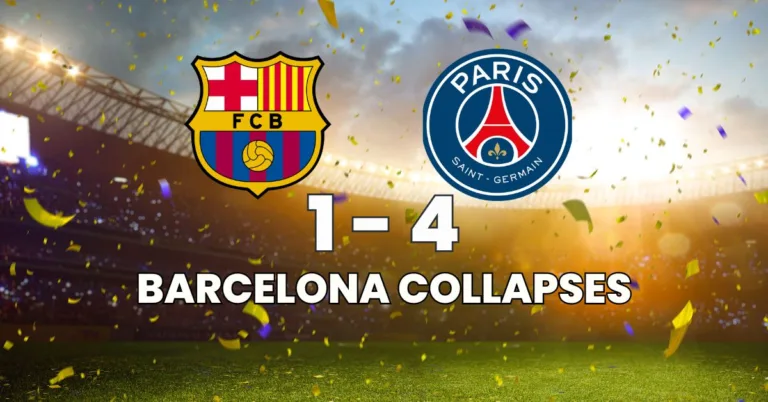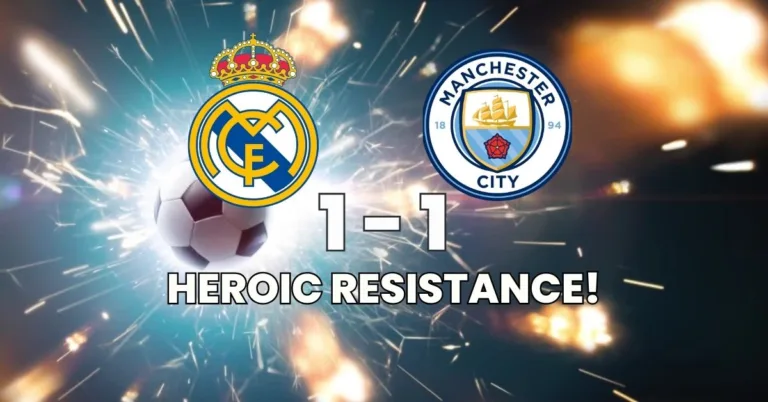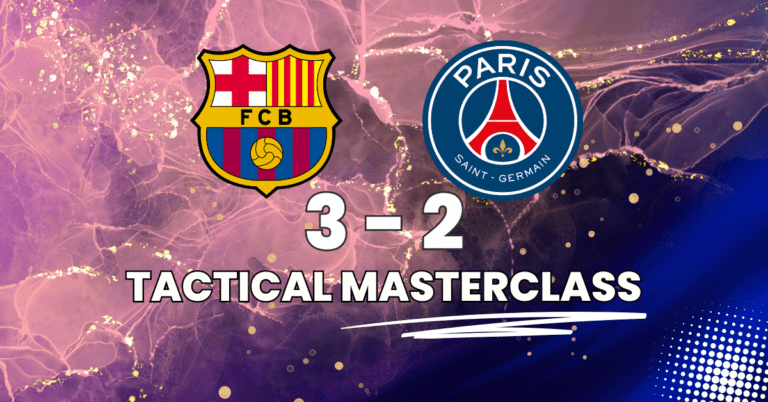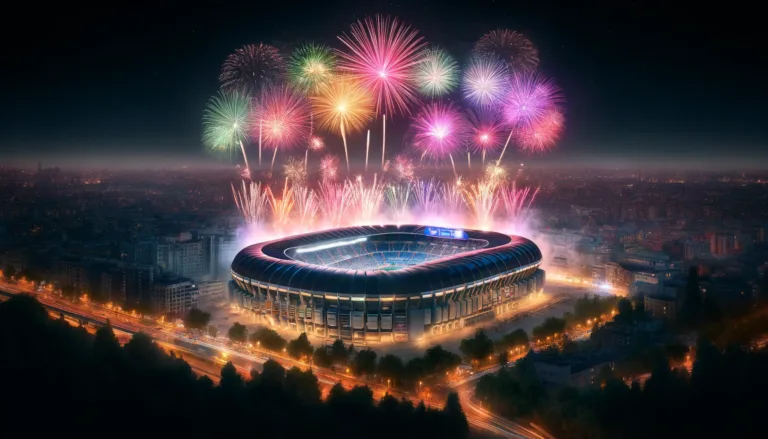The Winning Strategy in El Clasico – Real Madrid vs Barcelona – Tactical Analysis
After an exhausting victory at Etihad, where Real Madrid battled for 120 minutes against the Champions League title holders, the team triumphed again in a La Liga derby. Jude Bellingham emerged as the hero of the day, securing the win at Santiago Bernabeu in the final moments of the match.
Both teams entered the match on the back of four consecutive wins in La Liga, with Real Madrid leading the table, eight points ahead of Barcelona. This victory extended their lead to 11 points, essentially guaranteeing them this year’s La Liga title.
Starting Lineups
Real Madrid made three changes from their Champions League match against Manchester City. The most notable change was the inclusion of Luka Modric in midfield, taking on the captain’s role for this game.
The other two adjustments were in the defensive line, marking the return of Aurelien Tchouameni, who had been suspended for the match against City. Tchouameni resumed his position as central defender, partnering with Antonio Rudiger. On the flanks, Eduardo Camavinga replaced Ferland Mendy, and Lucas Vazquez stepped in for Dani Carvajal, who had a demanding match against City, marking players like Jack Grealish and Jeremy Doku, and was substituted in the second half of extra time due to fatigue.
Barcelona had a classic lineup, though without Gavi and Alejandro Balde, both sidelined for the rest of the season due to injuries. It’s noteworthy that Lamine Yamal and Pau Cubarsi, aged 16 and 17 respectively, are the youngest duo to debut in a La Liga derby since 1916.
Barcelona Scores Early
The first half began with both teams employing high pressing tactics. Barcelona, sticking to their 4-3-3 formation, pushed forward, with Lewandowski leading the charge. He managed to unsettle Lunin within the first two minutes, forcing an error, though Barcelona couldn’t capitalize on this.
As seen in their previous matches against Manchester City, Real Madrid proved dangerous on the counterattack. The first significant chance came from a build-up at the back, with Modric dropping deep to receive the ball, creating space in the midfield quickly exploited by Valverde. The ball was played diagonally to Vinicius on the opposite flank, but Barcelona had time to regroup and Kunde blocked his shot.
Barcelona’s pressing continued to cause problems early in the game, congesting the side where the ball was, forcing a misplaced pass on the left flank, earning a corner. Raphinha took the corner, sending it to the far post where Andreas Christensen rose above Toni Kroos and capitalized on a mistake by Lunin, who misjudged the ball’s trajectory, opening the score.
This goal marked Andreas Christensen’s first in La Liga.

Real Madrid Rallies at ter Stegen’s Goal
Immediately after the restart, Real Madrid intensified their attacks. Barcelona adopted a low block defensive stance, using a 4-5-1 formation. This alignment allowed them to maximize density in the midfield area and block passing routes for Real Madrid.
In this setup, Lewandowski remained the lone striker, ready to capitalize on any counterattack, while the rest of the team formed two dense lines: four defenders and five midfielders. This compact arrangement made it challenging for Real Madrid to penetrate through the middle, forcing them to seek alternatives on the flanks or attempt long-range shots.
The first significant chance for Real Madrid came from a cross by Tchouameni, cleverly deflected by Modric. Although the cross created a clear scoring opportunity, Vinicius failed to capitalize, with the shot having an expected goal (xG) of 0.245. This moment highlighted how, even within a well-organized defensive structure, the individual quality of Real Madrid’s players could create significant openings.
Joao Cancelo’s Mistake, Vinicius Levels the Score
Barcelona struggled to pose a threat to Lunin’s goal in the first 15 minutes, finding it difficult to move beyond the midfield. The notable action was a drive by Lamine Yamal, who shot from a tight angle, and Lunin deflected it for a corner.
Considering Barcelona’s defensive structure, which congests and rotates towards the wing where the ball is, the classic way to exploit and find gaps in this strategy is to switch the wings through long balls. Thus, Vinicius, from the left flank, sent the ball to the center, where it was distributed to the opposite flank to Lucas Vazquez. He dribbled past Joao Cancelo and was fouled in the box by Pau Torres.
Vinicius executed the penalty into the bottom right corner, and although ter Stegen guessed the direction of the ball, he couldn’t reach it.
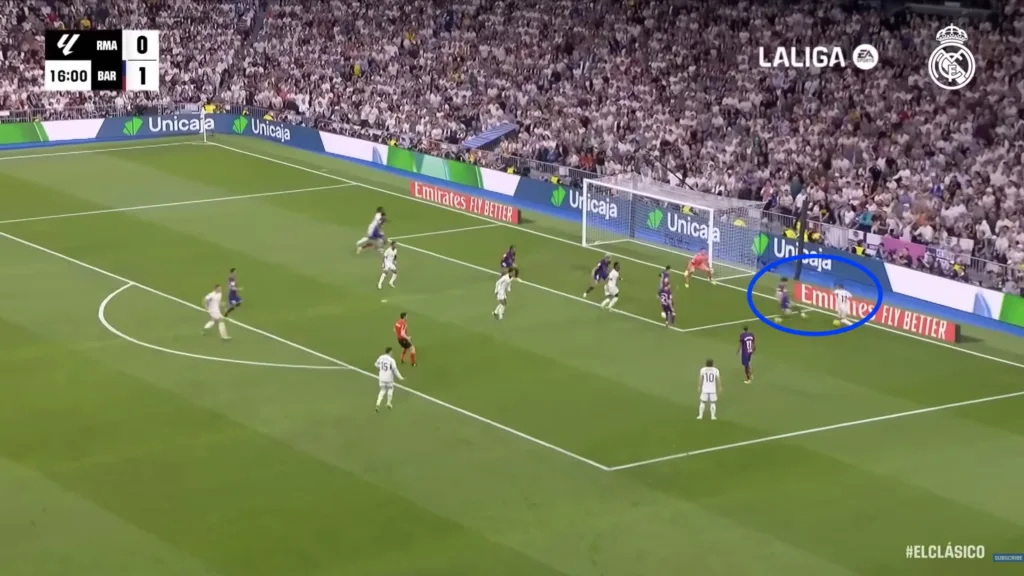
Yamal Scores, or Did He?
A controversial moment in this match was a corner taken by Raphinha in the 28th minute. He sent a low cross to the near post. The somewhat shot-like cross by Raphinha was redirected with the heel by Lamine Yamal, who was at the near post, in front of his marker. Here we can’t say it was a mistake by Madrid’s defense, as such a miraculous deflection was unlikely, yet it happened.
The discussion doesn’t arise from Lamine Yamal’s success, but from Lunin’s intervention. He cleared the ball from the goal line, but it’s unclear whether the goalkeeper cleared the ball from on or behind the line. Depending on the angle of the replays, both answers can be accepted, but since La Liga is the only major European competition that doesn’t use goal-line VAR technology, it couldn’t be determined, so the score remained 1-1.

Lamine Yamal was the star of the controversies in the first half, when Barcelona managed to stop a counterattack and the ball reached Yamal, who sped past Camavinga. He tried to dispossess him, and Yamal fell in Lunin’s 16-meter box. On replay, however, the minimal contact between the two is clearly visible, Camavinga going in for the dispossession but retracting his leg at the last moment to not trip the attacker. The replays, being analyzed again in the VAR room, confirms this, and Yamal can consider himself lucky not to see a yellow card.
A few minutes later, Camavinga really fouls and sees the yellow card, the Barcelona attacker earning a free kick from a dangerous position. However, Raphinha shoots over the goal.
Real Madrid’s Defense Shows Cracks
The second half brings some changes from Barcelona. After substituting Frenkie de Jong with Pedri before the break, Xavi introduces Fermín López in place of Andreas Christensen. Thus, Gündogan actually takes over Christensen’s role in front of the two central defenders, taking responsibility for linking the defensive line with the midfield.
Madrid’s defense, however, starts to show some gaps, adopting a wider position on the field, and thus in the 67th minute, Ferran Torres escapes, after a long ball thrown by ter Stegen. Initially, he manages to get past Camavinga, but the defender catches up with him from behind and has an intervention sufficient to make Torres miss the goal.
A few minutes later, we see an interesting tactic applied by Barcelona that leads to their second goal. Real Madrid is defending with a line of 4 defenders, and Camavinga, the right-back, is somewhere in the center of the field, watching the rotation of the defensive formation according to the flank where possession is. This leaves Lamine Yamal completely alone on that flank.
When the diagonal pass for Yamal goes, Fermín López sprints towards the center of the 16-meter box, to attract Rüdiger and Camavinga, which gives Yamal plenty of time. He makes an extremely elegant first touch, has time to set up his ball for the shot, and sends it. Lunin defends, but Fermín López keeps his position at the center of the box, between the two central defenders, and manages to send Lunin’s rejected ball into the goal, bringing Barcelona ahead.
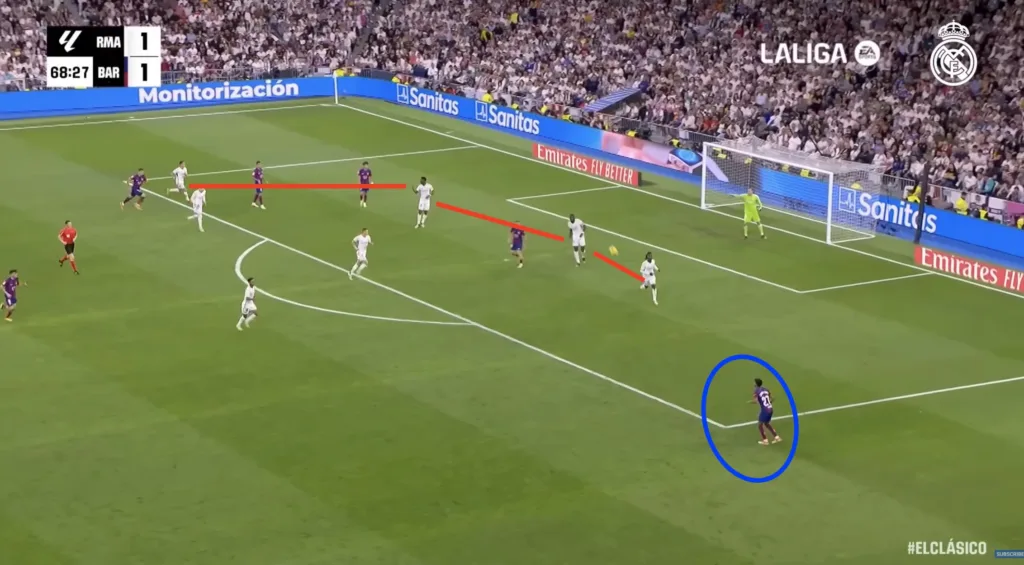
The Match’s Leitmotif Repeats
A recurring theme from this match was the free man left by the opposing defense on the opposite flank of possession. Of course, this is a common theme in almost all football matches in the world, because any defensive strategy focuses on covering the areas with the highest risk. However, if a team has high-quality players, including this area can become a major risk.
Thus, a few minutes after López’s goal, we can see Real Madrid’s offense concentrating on the right side, adopting a position where Valverde is somewhere close to the vertical halfway line of the field, and Lucas Vázquez is very close to the touchline. Given this layout, Barcelona’s defense can’t spread out enough to cover both of them, so they normally choose to cover the central area.
One of the high-quality players I was talking about above is, of course, Vinicius, who receives the ball on the right side of the field. He sends a superb cross behind the entire defense Lucas Vázquez’s run in the box, who restores equality on the scoreboard with an unstoppable shot that ricochets off the turf into ter Stegen’s net.

Bellingham Secures Victory in Extra Time
The last goal of the game is perhaps the ultimate demonstration of the spectacle and football that La Liga spectators enjoy. In the first minute of extra time at the end of the match, Brahim Diaz receives the ball from Fran Garcia, who wins it in a duel at the center of the pitch. Diaz dribbles very well and runs into the central space he creates with this dribble and sends it to the right wing.
Again, Barcelona’s defense concentrates on the center and on the wing where the ball is, and this time Jude Bellingham is the one left alone on the opposite flank. The cross comes, finds Joselu at the center of the box, but of course, he can’t shoot due to the concentrated defense on him. Instead, he spectacularly extends the cross with his heel to Jude Bellingham, who fires a powerful shot directly into the top net of the goal and brings victory for Real Madrid.

Conclusions
The match between Barcelona and Real Madrid was a football spectacle that fully demonstrated the quality and intensity of the rivalry in La Liga. From Barcelona’s rapid opening of the score to Real Madrid’s equalizers and decisive victory obtained in extra time, the match offered a series of memorable moments.
The strategies of both teams highlighted both their strengths and vulnerabilities, with Barcelona capitalizing on Madrid’s defensive mistakes and vice versa. The use of spaces and management of pressure moments played a crucial role in the dynamics of the match. Despite some controversial phases, the lack of goal-line VAR technology left some decisions shrouded in uncertainty, adding even more drama to the encounter.
In conclusion, this confrontation underscored not only the individual quality of the players but also the importance of well-executed tactics. The winning goal, scored by Jude Bellingham, was not just a moment of triumph for Real Madrid, but also a valuable lesson about the importance of effective field coverage and anticipating the opponent’s moves. Thus, this match remains not just a victory in the club’s statistics, but also a demonstration of football artistry, appreciated by fans and analysts alike.


